Why you can trust TechRadar
Here's how the Asus ROG Mothership performed in our suite of benchmark tests:
3DMark: Sky Diver: 52,249; Fire Strike: 11,172; Time Spy: 10,209
Cinebench CPU: 4,033 points; Graphics: 142 fps
GeekBench: 5,633 (single-core); 30,842 (multi-core)
PCMark 8 (Home Test): 6,950 points
PCMark 8 Battery Life: 3 hours and 12 minutes
Battery Life (TechRadar movie test): 2 hours and 41 minutes
Total War: Warhammer II (1080p, Ultra): 90 fps; (1080p, Low): 178 fps
Shadow of the Tomb Raider (1080p, Ultra): 92 fps; (1080p, Low): 129 fps
With all that power available, we were keen to see just what the Asus ROG Mothership was capable of. It handled all of our standard benchmarking software with ease, so we moved on to some more real-world testing as well.
Given that the ROG Mothership bundles with an RTX 2080, we were keen to see how it would handle ray tracing performance, which is being introduced to more and more games.
Firing up Shadow of Tomb Raider on Ultra with ray tracing enabled clocked in 82fps, which is still very impressive. Likewise, Control gave us a steady 98fps with ray tracing enabled, turning an already excellent-looking game into a truly visual treat.
For those who would want to use the Mothership on par with what you could expect from a workstation, then you won’t be disappointed. We ran the SPECWorkstation 3 benchmark with the below results to see just how the Mothership would run under more intense applications.
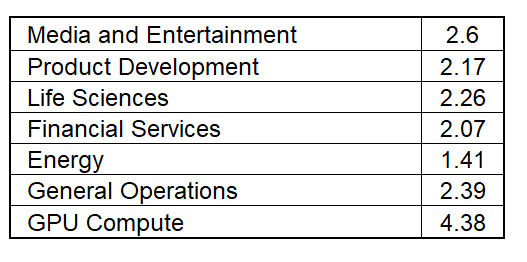
We saw similar results when rendering video in Adobe Premiere Pro – a 10 minute 4k video was rendered in 3 minutes, while a 60 minute Full HD video took 17 minutes to render out with the H.264 codec. Anyone looking to work with large video files or animations can easily do so on the Mothership, and the support for external displays definitely makes it easier to organize workflows.
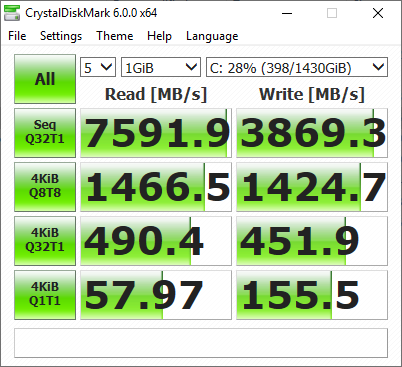
Disk speeds were also off the charts, making it a snap to launch applications or copy over large amounts of data. The three SSDs are grouped together and perform as a single drive, with two of the SSDs being connected directly to the CPU. This results in some incredible read and write speeds, so no matter what you’re throwing at the Mothership, it’ll catch up easily. We copied a 14GB folder of various file sizes from the Desktop to the C drive, and it completed within 12 seconds.
Sound and software
The Mothership features four 4W speakers on the front, located behind the lit up grille. They’re able to produce a 7.1 virtual surround sound experience, but in our testing we could hardly differentiate between this and regular stereo sound.
What is slightly annoying is that the sound is quite muffled when the keyboard is docked, so in order to fully appreciate the speakers you’re going to have to keep the keyboard detached. Volume levels are fairly loud, but the quality isn’t as impressive and lacking overall depth and range. Things are much better when headphones are plugged in, thanks to Asus’ suite of audio software to tweak your listening experience.
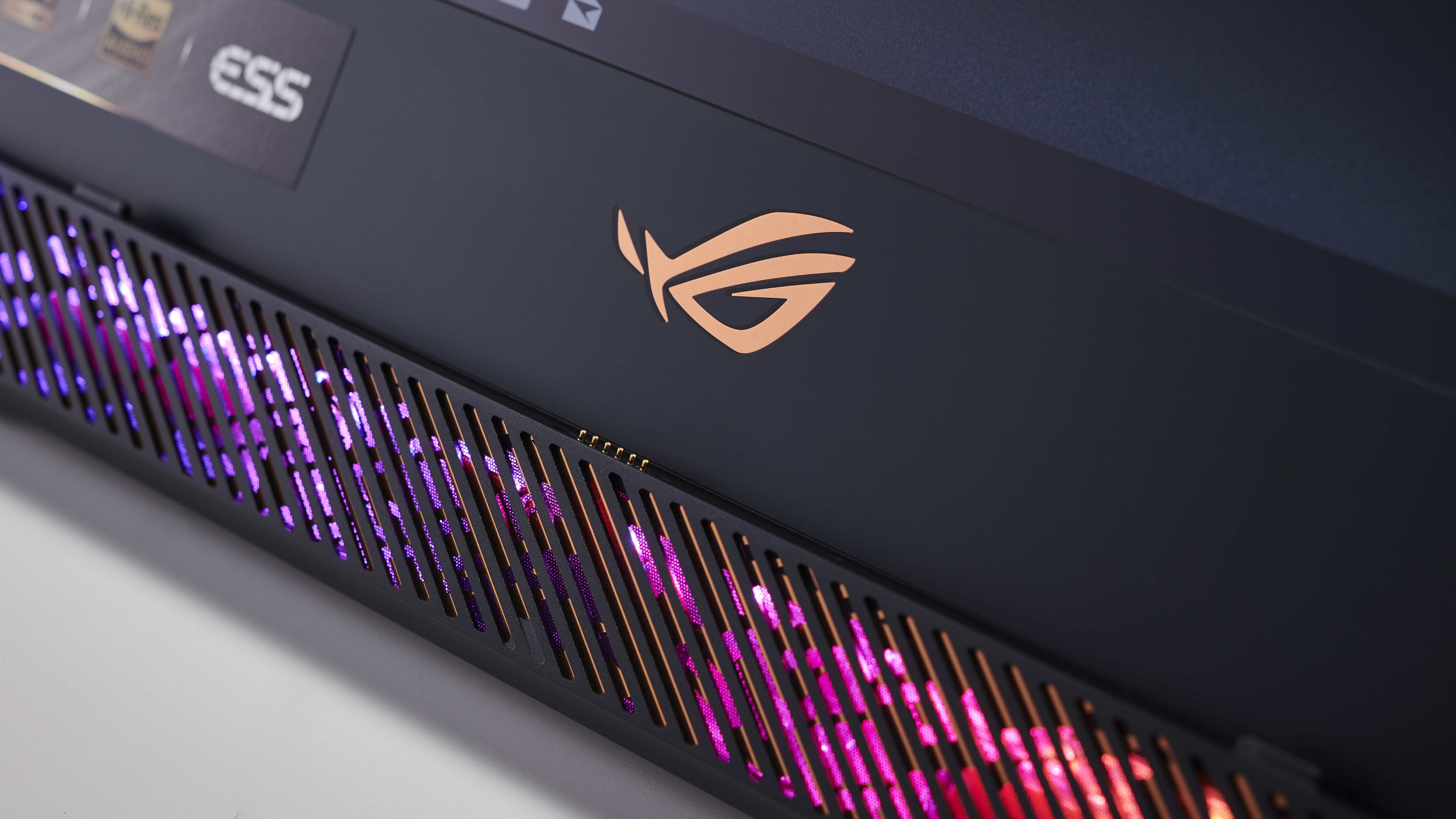
There’s a fair bit of Asus software installed on the Mothership, including Sonic Radar III and a control center to instantly overclock components as required. Sonic Radar III provides an on-screen ‘radar’ that uses visual cues to indicate which direction a sound is coming from.
It’s more intended to assist gamers who are hard of hearing rather than providing any sort of competitive advantage, and Asus is quick to point out that the software only uses audio that the game has already rendered, so it’s not considered to be a game hack. The control center allows you to quickly toggle between different performance modes for the Mothership, depending on your usage scenario. You can also pair this up with a smartphone app for easier control, so you can adjust settings at any time.
Battery life and upgrades
The Mothership does have a battery, but don’t get too excited just yet. You’ll get just under three hours of battery life out of it, and that’s from normal usage and not attempting to run any games on it. Our advice would be to set the Mothership up in one space, and only use it on battery if you need to briefly relocate it somewhere.
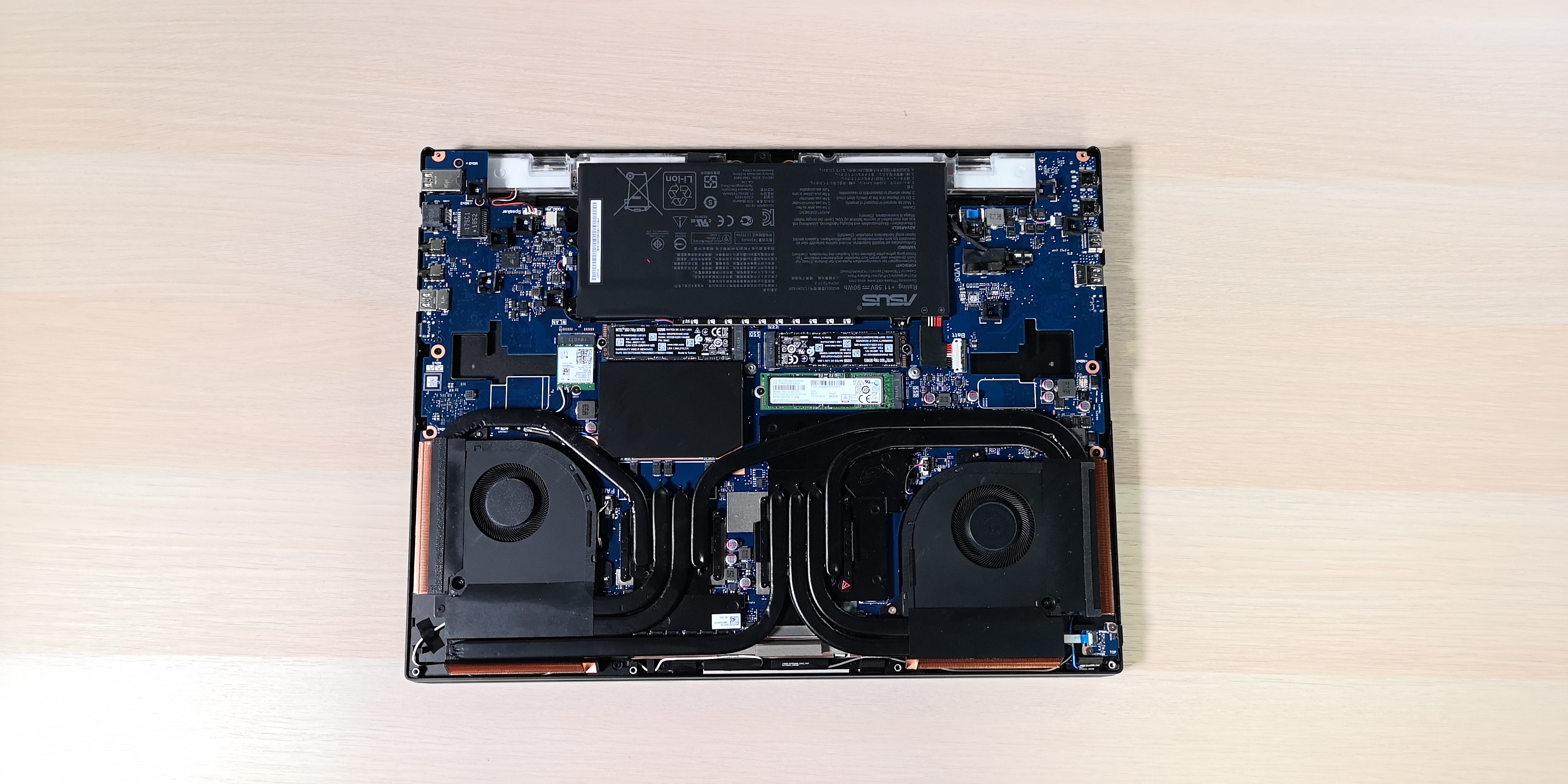
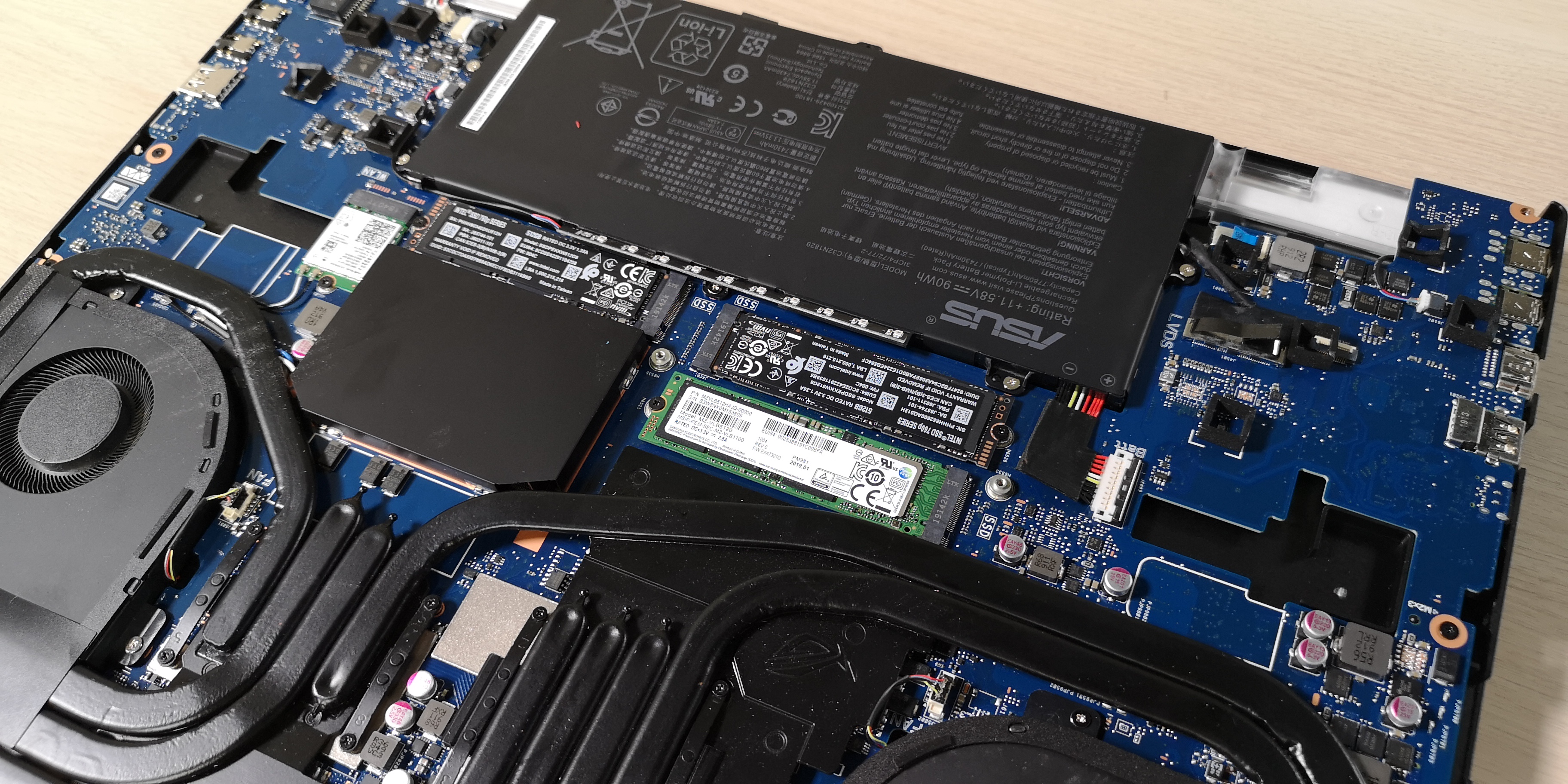
Upgrading the Mothership is in theory possible, but is a slightly daunting affair. There are a number of screws hidden away around the chassis, proving that Asus doesn’t want consumers to go tinkering around inside. But should your curiosity get the better of you like ours did, it is entirely possible to unscrew the back off and peek inside.
Here you’ll be greeted by the three SSDs firmly screwed to the motherboard, sitting under their own heatsink. We’d wager that RAM is also upgradeable as well, but that was hidden away under a more complicated-looking heatsink that we didn’t quite feel like disturbing.
Final verdict
The Asus ROG Mothership is certainly a feat of engineering, with plenty of powerful components hidden away in a fairly deceptive form factor. It crosses a weird line between the world of laptops and desktops, and we’re impressed by what Asus has managed to pull off.
But what ultimately stands out is not the performance of the Mothership, but its price tag. Could you build an equally powerful desktop PC for the same amount or less? Possibly. Would it look as cool as this? Probably not. The Asus ROG Mothership gets a few things right for a first-generation attempt, but still needs a bit of tweaking to make it a truly flawless system.
A former IT & Marketing Manager turned full time Editor, Nick enjoys reviewing PC components, 3D Printers, projectors, and anything shiny and expensive. He can also be found baking up a storm in the kitchen, which we are more than happy to encourage.

